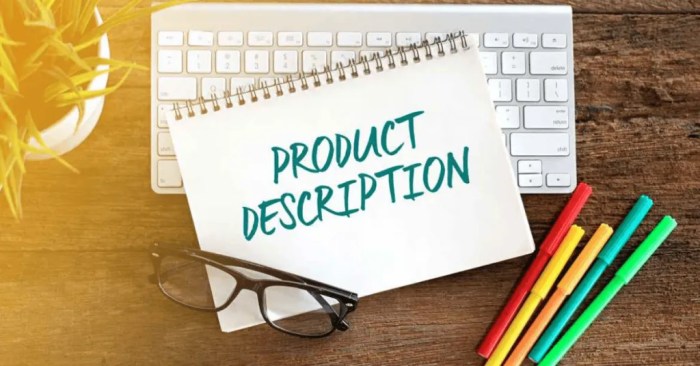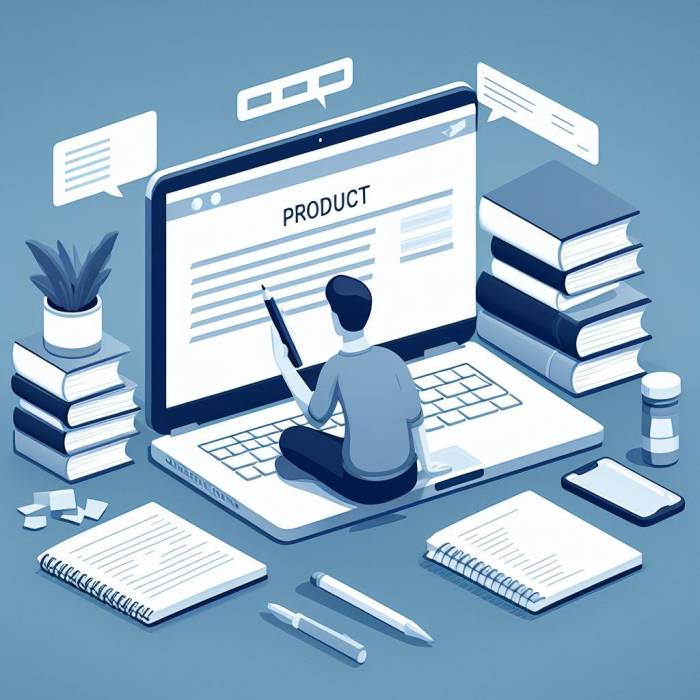Writing Product Tutorials: Crafting Engaging Guides for Users and Businesses invites you to dive into the world of creating effective tutorials that captivate audiences and drive product adoption. From planning to interactive elements, this guide has got you covered!
Introduction to Writing Product Tutorials
Product tutorials are essential guides that help users understand how to use a product effectively. For businesses, creating well-written tutorials can lead to increased customer satisfaction, reduced support costs, and higher product adoption rates.
Importance of Product Tutorials
Product tutorials play a crucial role in guiding users through the features and functionalities of a product. They provide step-by-step instructions, troubleshooting tips, and best practices to ensure a smooth user experience.
- Empower Users: Tutorials empower users to make the most out of a product by teaching them how to use all its features effectively.
- Reduce Support Costs: Well-written tutorials can reduce the number of support requests, saving businesses time and resources.
- Enhance Product Adoption: Clear and concise tutorials can increase product adoption rates as users feel more confident in using the product.
Examples of Effective Product Tutorials, Writing Product Tutorials
Some popular product tutorials that have been effective include:
-
Apple’s iPhone User Guide: Apple provides detailed tutorials on how to use their iPhones, covering everything from basic functions to advanced features.
-
Adobe Photoshop Tutorials: Adobe offers a wide range of tutorials for Photoshop users, helping them enhance their editing skills and creativity.
-
Salesforce Trailhead: Salesforce’s interactive tutorials guide users through their platform, making it easy for beginners to learn how to use their CRM software.
Planning and Research: Writing Product Tutorials
Before diving into writing a product tutorial, it is crucial to understand your target audience. Knowing who will be using the tutorial helps in tailoring the content to their needs and level of expertise.
Understanding the Target Audience
Researching the demographics, preferences, and knowledge level of your target audience is key. This information will guide you in using the right language, examples, and level of detail in your tutorial.
Thorough Product Feature Research
To provide accurate information in your tutorial, it is important to thoroughly research the product features. Explore the product manual, official website, and even user reviews to gather all necessary details.
Outlining Tutorial Structure
When outlining your tutorial, start by identifying the main sections and s. Create a logical flow of information to ensure clarity and coherence for the readers. Use headings, subheadings, and bullet points to organize the content in a visually appealing manner.
Writing Style and Tone

When it comes to writing product tutorials, the appropriate style is a mix of technical and casual language. You want to provide clear, step-by-step instructions while also being engaging and relatable to the user. Maintaining a consistent tone throughout the tutorial is crucial for better user engagement. This means using the same level of formality, humor, or enthusiasm from start to finish.
Maintaining Consistent Tone
To maintain a consistent tone in your tutorial, start by identifying the target audience and adjusting your language accordingly. If your audience is more technical, you can use industry-specific jargon and a more formal tone. On the other hand, if your audience is beginners or casual users, it’s best to keep the language simple and conversational.
- Use a conversational tone to make the tutorial more engaging.
- Avoid switching between formal and casual language within the same tutorial.
- Inject personality into your writing to keep users interested.
Remember, the key is to match your tone to your audience for better user engagement.
Effective Language Use
When writing product tutorials, it’s important to use language that is clear, concise, and easy to understand. Here are some examples of effective language use in tutorials:
- Use bullet points or numbered lists to break down steps.
- Include screenshots or images to visually demonstrate instructions.
- Use active voice to make instructions more direct and engaging.
Visual Elements in Tutorials

When it comes to creating product tutorials, incorporating visual elements like images, screenshots, and diagrams can significantly enhance the effectiveness of the content. Visual aids not only make the tutorial more engaging but also help readers better understand complex concepts or steps.
The Significance of Using Visuals
Visual elements in tutorials serve as a guide for readers, providing them with a visual representation of the information being presented. Images, screenshots, and diagrams can clarify instructions, highlight key points, and break down complicated processes into easily digestible chunks. By combining written instructions with visual aids, tutorials become more accessible and user-friendly.
Creating Visually Appealing Graphics
To create visually appealing graphics for tutorials, make sure to use high-quality images and screenshots that are clear and easy to understand. When creating diagrams, opt for simple and clean designs that effectively convey the information without overwhelming the reader. Consider using color coding, arrows, and labels to draw attention to important details and make the visuals more engaging.
Tips for Incorporating Visual Elements
– Use screenshots to show step-by-step processes or demonstrate specific actions.
– Create infographics or diagrams to illustrate concepts or relationships between different elements.
– Label images and diagrams clearly to ensure readers can easily identify key components.
– Use a consistent style and color scheme across all visual elements to maintain cohesiveness.
– Balance the use of visuals with written instructions to provide a comprehensive learning experience.
Step-by-Step Guide Development
When creating product tutorials, it’s crucial to break down complex tasks into simple steps to ensure easy understanding for your audience. By providing clear and concise step-by-step guides, you can help users navigate through the process smoothly.
Importance of Step-by-Step Guides
Creating step-by-step guides is essential because it helps users follow along easily without feeling overwhelmed by the task at hand. By breaking down the process into manageable steps, you can ensure that users can complete the task successfully.
- Start by outlining the main steps of the process in a logical order.
- Use bullet points or numbered lists to clearly present each step.
- Include detailed instructions for each step to provide clarity.
- Use visuals such as images or screenshots to enhance the understanding of each step.
Remember to use simple language and avoid technical jargon to make the guide accessible to all users.
Including Troubleshooting Tips and FAQs
In addition to providing step-by-step instructions, it’s important to include troubleshooting tips or frequently asked questions (FAQs) in your tutorial. This helps users address any issues they may encounter during the process and provides solutions to common problems.
- Anticipate potential roadblocks that users may face and provide solutions in advance.
- Include a troubleshooting section at the end of the tutorial to address common issues.
- Create an FAQ section to answer any questions that users may have about the process.
- Encourage users to reach out for help if they encounter any difficulties that are not addressed in the tutorial.
Interactive Elements and User Engagement
When it comes to creating engaging product tutorials, incorporating interactive elements is key to keeping users interested and involved in the learning process. By adding elements like quizzes, polls, and other interactive features, you can enhance user engagement and make the tutorial experience more enjoyable and effective.
Quizzes and Polls
Adding quizzes and polls to your product tutorials is a great way to test users’ knowledge and keep them actively engaged. Quizzes can help reinforce key points and concepts, while polls can gather feedback and opinions from users. By including interactive elements like these, you can create a more dynamic and immersive learning experience for your audience.
- Quizzes: Create multiple-choice questions or true/false statements related to the tutorial content. This allows users to test their understanding and retention of the material.
- Polls: Use polls to gather user feedback on different aspects of the tutorial, such as clarity of instructions, helpfulness of visuals, or overall satisfaction with the learning experience.
Interactive quizzes and polls can help users actively participate in the learning process and provide valuable insights for improving future tutorials.
Encouraging User Feedback
In addition to quizzes and polls, it’s important to actively encourage user feedback and suggestions for improving your product tutorials. By creating a welcoming and open environment for feedback, you can gather valuable insights into what users find helpful, confusing, or missing from the tutorial content.
- Feedback Forms: Include a feedback form at the end of the tutorial where users can provide comments, suggestions, or ask questions about the content.
- Social Media Engagement: Encourage users to share their thoughts and feedback on social media platforms, creating a community around your tutorials and fostering a sense of collaboration.
By incorporating interactive elements like quizzes, polls, and feedback mechanisms, you can create a more engaging and user-friendly experience for your audience, leading to improved learning outcomes and increased user satisfaction.